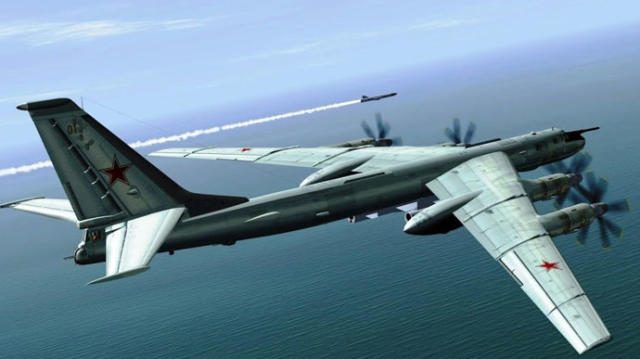In a bold move that underscores the escalating tensions between Russia and Ukraine, a massive ‘wave attack’ was launched by Russia on the Starokonstantinov Air Base, situated near Starokostiantyniv in the Khmelnytskyi Oblast of Ukraine. The attack, which unfolded during the early hours of August 6, 2023, targeted the 7th Tactical Aviation Brigade stationed at the airbase, known for flying Sukhoi Su-24M and Su-24MR aircraft.
Russian Offensive Unleashed: A Series of Devastating Waves
The meticulously planned offensive consisted of multiple waves that systematically aimed to cripple the airbase’s capabilities. In the initial wave, a volley of cruise missiles was unleashed from Tu-95MS bombers and ballistic missiles. The second wave incorporated a combination of cruise missiles and Geran-2 drones, followed by the final wave featuring Kh-101 long-range stealth cruise missiles. These cruise missiles utilized cunning tactics to bypass Ukrainian air defense systems, leading to an unprecedented and severe attack.
Red Line Crossed: Ukraine’s Provocations Fuel Russian Wrath
The intensity of Russia’s attack seems to have been triggered by Ukraine’s recent provocative actions. Ukraine’s increasingly aggressive stance, stemming from its faltering counter-offensive, has heightened tensions in the region. The use of British Storm Shadow and French Scalp long-range cruise missiles, based on Su-24MR platforms, to target Russia’s acquired territories fueled the anger that culminated in this massive assault.
Ukraine’s audacity became evident when it crossed a significant threshold by targeting strategic bridges connecting Crimea and the Kherson region. The consistent targeting of these key infrastructures and ammunition depots within Crimea further infuriated Russia, prompting a powerful response.
Exploiting Defensive Gaps: Ukraine’s Clever Strategy
With a clever strategy to spread Russian defenses thin, Ukraine widened its scope of Storm Shadow missile targeting. The limited battlefront along Russia’s new territories was dominated by heavily contested airspace and sophisticated anti-aircraft systems. Ukraine’s Storm Shadow missiles proved successful due to their ability to evade detection by flying low over the sea, allowing Ukraine to effectively strike Russian targets.
Unlike previous Russian attempts to quell the Storm Shadow threat, this attack targeted Storm Shadow missile stocks, maintenance facilities, and launch platforms with a comprehensive strategy.
The Enduring Storm Shadow Threat: Russian Struggles
Russia’s repeated attacks on the Starokonstantinov airbase have failed to eliminate the Storm Shadow threat. Despite strategic planning and execution, Ukraine’s preparedness has thwarted Russia’s attempts. Ukraine’s early warning system, reinforced by US/NATO surveillance assets, affords sufficient time for countermeasures and relocations. Furthermore, Ukraine’s airbase infrastructure, fortified with hardened shelters and tactical relocations of out-of-service aircraft, has proven resilient.
The UK and France’s ample stocks of Storm Shadow and Scalp missiles respectively, combined with Ukraine’s well-dispersed missile stock, have made it challenging for Russia to achieve tangible results in diminishing Ukraine’s missile capabilities.
Implications and Future Outlook
In conclusion, the relentless Storm Shadow missile threat that Ukraine wields against Russia is not easily overcome. Despite Russia’s tactical prowess and aggressive strategies, Ukraine’s preparedness, NATO assistance, and ingenious maneuvers have consistently thwarted attempts to neutralize this capability. The conflict showcases the intricate dance between offensive strategies and defensive innovations, reflecting the evolving landscape of modern warfare.















